Putting the fab in pre-fab on Skid Row
November 29, 2012
Architect Michael Maltzan builds museums and mansions. His latest commissions include an addition to the American ambassador’s residence in Paris, a new pier in St. Petersburg, Florida, and an arts center for Rice University. Architectural Digest hails his “visionary approach” and the New York Times has dubbed him “a darling of wealthy art world patrons.”
So what’s an acclaimed architect like Maltzan doing in a place like L.A.’s Skid Row?
You’d be amazed.
Maltzan, whose firm is based in Silver Lake, is helping to rewrite the playbook on designing housing for the homeless in Los Angeles. Over the past five years, his two projects for the non-profit Skid Row Housing Trust—the Rainbow Apartments and the New Carver Apartments, next to the 10 Freeway at Hope Street—have pushed the envelope of what it means to create shelter while fostering a healing sense of community.
Now he’s at it again, venturing for the first time into a project that will graft pre-fabricated housing units onto an existing, multi-use single-story building at 6th Street and Maple Avenue. A new “structural tray” atop the original building will support the network of 100-plus studio apartments being trucked in from a factory in Idaho, while also forming a kind of outdoor mezzanine with community gardens, jogging track, basketball court, yoga platform and shared kitchen, laundry and computer room spaces. Supportive services, including a ground-floor medical clinic, will serve not just the residents of the new Star Apartments, but also people who live in the surrounding community.
The first units won’t be installed until December and the building isn’t set to open until next spring or early summer, but already Maltzan’s design is being lauded for its “elegant composition of prefabricated blocks.”
The Star project represents “a big innovation,” says Mike Alvidrez, the Housing Trust’s executive director. He praises Maltzan for bringing “a very fresh, innovative way of thinking about buildings…in particular when it comes to how design can be influential in terms of helping people recover from homelessness.”
Creating social, communal interactions is a big part of the Star’s design. The homeless, Maltzan says, “live on the street all the time. We think that they must be very well adjusted to living in public, but the reality is, the only way a human being is able to survive in that kind of situation without any private life at all is to create that private life within themselves, and start to create a real shell around themselves and disconnect from culture and community around them.”
So unlike the old transient hotel experience, where “you felt like you were under surveillance” when you entered the lobby and then “disappeared into your room and were never seen until you came back out,” the Star is designed so residents will step onto a walkway or balcony when they leave their units.
“You are moving through a more social situation,” Maltzan says.
He’s also excited about his first foray into pre-fabrication. Using pre-fab methods to build multi-family housing is more economical, efficient and environmentally-friendly than traditional construction methods—and, contrary to old stereotypes, offers sturdier, easier-to-maintain living spaces, he says.
“It allows us to reach a higher level of quality for the same cost,” he says. “When I say higher level of quality, it’s not making it fancier. It’s making it better, more durable, and nicer to use when you’re in the unit.”
And looks matter—whether you’re building a 28,000-square-foot residence for a mogul like Michael Ovitz or a 340-square-foot refuge for someone used to sleeping on the street.
“A big part of our goal,” Maltzan says, “is to say that architecture and design and beauty are something that should be accessible to the full range of the population of Los Angeles County.”
Not everybody saw it that way, at least initially. After the opening of his first Skid Row Housing Trust project, the Rainbow, some people asked him:
“Why are you making these buildings look so good? Why are you making them so identifiable? That must be more expensive. Why aren’t you just housing these people?”
Maltzan disagrees—not just on the expense question but on the notion that good design is just for the privileged. And he’s heard the same thing from people who live in his buildings, including the Rainbow.
“I’ve been to that building many, many, many times. I’ve been there when people knew I was the architect and I’ve been there when people didn’t know I was the architect. And the thing I get again and again and again from that community is, ‘We live in a place that looks like something, as opposed to a place that looks like nothing.’ ”
The new approach to building for the homeless is part of an overall shift that emphasizes the value of creating “permanent supportive housing,” which provides not just a roof overhead but surrounds residents with vitally-needed medical, mental health and other services. Project 50, which targeted some of the most entrenched residents on Skid Row for such housing, is a widely-cited success story, praised for transforming lives and saving money.
The Star Apartments, the first pre-fab homeless housing complex in L.A., is expected to embody those principles—and perhaps provide a template for the future.
“I think we could use many, many more projects like this,” says Alvidrez, of the Skid Row Housing Trust.
For his part, Maltzan thinks important elements in the Star Apartments could work all over Los Angeles—and not just for a homeless clientele.
“I can’t wait to do another project like that,” he says.
Maltzan, 53, who grew up in Levittown, N.Y. and was educated at the Rhode Island School of Design and at Harvard, moved to Los Angeles in 1988. He and his wife, Amy Murphy, an architecture professor at USC now pursuing a PhD in the university’s School of Cinematic Arts, now live with their two children in Pasadena.
He considers L.A. “the most compelling laboratory for thinking about the future of cities and the future of architecture in relationship to those cities.”
And he thinks he sees a glimpse of the future in the homeless housing efforts now afoot.
“As a citizen in the community, it makes me feel optimistic that you can effect change in a positive way in what most people have said is an intractable dynamic, that homelessness just can’t be changed, that that community is lost,” he says. “That is not the case. You can effect real change.”
There’s also a sense of vindication for his profession as a whole.
“One of architecture’s responsibilities is to use its capacity to continue to move cities and communities forward. And that includes making very pragmatic and functional buildings, cost-effective buildings, but also buildings that look like something, that stand for something, that aren’t shy in creating iconic structures that are for the culture as a whole,” he says.
“It’s extremely important for us to make the very best for the wealthiest segments of our community as well as for the less privileged in our communities. And it’s only when we work in all of those segments that you have any hope of creating a viable, sustainable, progressive metropolis.”
Posted 11/29/12
A plethora of philanthropy
November 28, 2012
If you’re looking for a chance to give back, this weekend offers a rich array of opportunities—from serving up a feast to shopping for a cause. Here are some of the possibilities for volunteering, fundraising and donating your way into a fulfilling 2012 holiday season.
Heroes welcome
The 20th Annual Veterans Holiday Celebration will be held at the West Los Angeles VA Campus from 12:30 p.m. to 5 p.m. on Sunday, December 2. Donate or join an army of about 650 volunteers who will feed, serve and entertain about 3,500 veterans. Volunteers will be needed for the day of the event and for set-up on Saturday, December 1.
Calling young environmental activists
Heal the Bay’s “A Day Without a Bag” Youth Summit will train high school students and college-aged young adults to organize campaigns to get people to ditch single-use plastic bags for a day. The summit takes place in Hollywood on Saturday, December 1 from 12 p.m. to 5 p.m. (A Day Without a Bag is December 20.)
Helping kids read
“Let’s Read!” offers one-on-one tutoring in reading, writing and other skills to kids who have limited access to educational resources. This Saturday, December 1, the group will set up shop in West Los Angeles. Volunteers are being recruited for commitments of a minimum of three Saturdays.
A really big giveaway
It takes a lot of helping hands to distribute 85,000 clothing items and children’s books to 5,000 folks in need. National Council of Jewish Women is seeking hundreds of volunteers to help do just that at their annual Community Resource Fair in the Fairfax district this Sunday, December 2, from 6:45 a.m. to 1:15 p.m. Volunteers are needed for the day of the event and on Saturday, December 1, to prepare. If you can’t make it out, the organization has a list of other ways you can pitch in.
A stylish benefit to feed the sick
Divine Design bills itself as the largest charity shopping event on the West Coast. The fashion festival in Beverly Hills benefits Project Angel Food, a nonprofit organization that delivers 13,000 meals per week to people with life-threatening illnesses like cancer and AIDS. The merchandise is donated by designers and companies. Volunteers are needed to set up, manage and clean up for the event, which runs from Thursday, November 29 to Sunday, December 3. Volunteers will receive a free day pass to shop and a free T-shirt.
The redcoats are coming
You’ve done charity walks before, but have you ever done one… as Santa!? Suits will be provided for the 2012 Santa Walk at the Westfield Topanga Mall, a walk that benefits Variety, a nonprofit organization that raises funds to provide support for disabled, abused, physically-challenged and underprivileged kids. The walk takes place Sunday, December 2, from 9 a.m. to 12 p.m. Register to raise funds and walk yourself or donate to support someone else’s day in the life of The Man in Red.
Posted 11/28/12
Sepulveda? Pass.
November 28, 2012
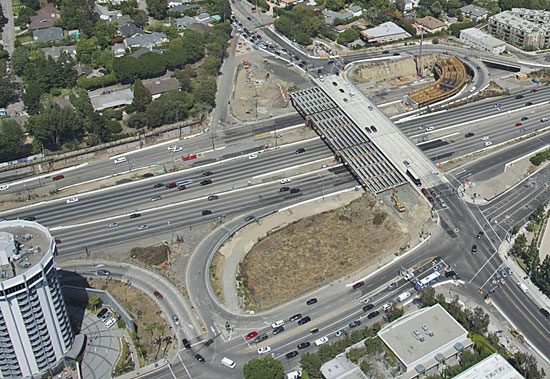
Sepulveda Boulevard, which runs along the 405, is closing between Montana and Church every night this week. Photo/Metro
While the 405 Freeway and its bridges have gotten much of the attention during the long-running project to bring a northbound carpool lane and other improvements to the Sepulveda Pass, the boulevard running parallel to the freeway has been a nerve center of activity in its own right.
Utilities under Sepulveda Boulevard have been relocated in a complex, two-year process. The section of roadway between Montana Avenue and Church Lane has had to move east—as much as 22 feet at one point—to make way for the coming carpool lane.
And this week that stretch is being repaved, which means the .7-mile segment from Montana to Church is down to one lane in each direction from 6 a.m. to 9 p.m., and closing completely each night beginning at 9 p.m. The work, which started on November 26, is expected to wrap up by 6 a.m. on Monday, December 3. Updated 11/30/12: Because of the rain, Metro announced that the work is expected to continue through Thursday, December 6. Details are here.
Click here for an overview of the Sepulveda work.
Posted 11/28/12
Thousands hit with toll lane citations
November 27, 2012
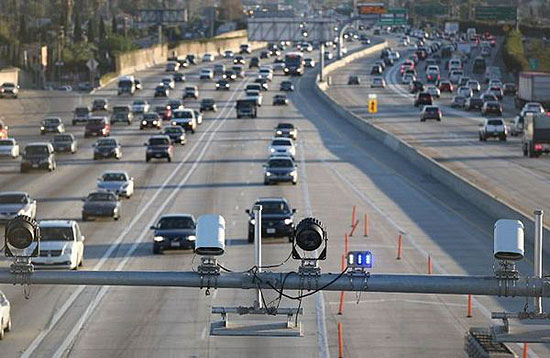
L.A.'s first toll roads are up and running, but don't venture in without a transponder. Photo/Los Angeles Times
The free ride is over for thousands of motorists who’ve been driving in Los Angeles’ first toll lanes without paying their way.
The new ExpressLanes on the 110 Freeway opened November 10, and as of Monday, Metro had mailed 12,297 citations to motorists caught on camera without the required FasTrak transponders. Collectively, the first batch of toll lane scofflaws owes $18,358 in outstanding fees—a total that’s expected to rise as more citations go out in the weeks ahead.
That’s the bad news. The good news is that, for now, offenders are only being asked to fork over enough to cover their tolls. They aren’t yet being hit with any fines for rolling into the new pay-as-you-go fast lanes that used to be reserved solely for carpoolers and motorcyclists. (They continue to ride for free but, like everybody else who uses the new lanes, still need to have a transponder. Here’s how to get one. Read more about the rules of the road here or consult the project’s Frequently Asked Questions page.)
The Metro fines for those driving in the lanes without a transponder—$25 plus a $30 penalty if you pay late—kick in beginning December 10, when the pilot program hits the one-month mark. In addition, the California Highway Patrol has the authority to issue tickets of $401-plus for solo drivers who evade fares by placing their transponders on a carpool setting, and penalties of at least $154 for those driving in the lanes without the device. (To help CHP officers know who to pull over, there are sensors along the 11-mile route, along with beacons to signal to officers whether cars have transponders and whether they’re set to correctly reflect how many people are in the vehicle.)
As motorists adjust to a huge change in L.A.’s freeway culture, there’s a certain amount of confusion out there, said CHP Sergeant Terry Liu, ExpressLanes supervisor for the agency.
“A lot of [drivers] don’t understand that every vehicle has to have a transponder regardless of whether or not you satisfy the car pool requirement,” Liu said. “We are seeing people crossing over the double white lines, and then, when we pull them over, we notice they have no transponder.”
At this stage, Metro’s primary goal is not to punish violators but to get more people on board with the program, said Stephanie Wiggins, the project manager for Metro.
“When we send out the [toll citation] notices, we also send out an application” to get a transponder and set up an account, Wiggins said. “If they apply, they can get a waiver of the penalty. We want good customers, good transactions. It’s partly a marketing tool.”
Wiggins says the fine-free grace period also is an attempt to acknowledge that, despite outreach efforts, there was no way for Metro to engage the attention of every potential driver on the busy freeway. She also said that some confusion was to be expected initially. Once drivers start receiving citations and word spreads, she expects more people to fall in line. An electric sign with travel times and toll amounts, due to be unveiled this week, should also help ease some of the confusion.
There’s no way to immediately determine how many violators are gaming the system or are merely confused. Wiggins noted, however, that some of the citations are going to repeat toll lane offenders. But not for long, she predicted.
“Once they get tickets and understand that we do have a way to monitor them, we expect more compliance,” she said.
Overall, Wiggins said, traffic speeds in the ExpressLanes have exceeded the agency’s goal of 45 miles per hour. In fact, average speeds during peak traffic have been 63 miles per hour in the northbound lanes and 58 miles per hour in the southbound lanes, she said.
However, traffic in the free lanes has gotten more congested, she added, attributing the problem in part to motorists slowing down to try figure out the new program.
The toll lanes on the 110 run from the 91 Freeway to Adams Boulevard in downtown L.A. In January, 14 additional miles of ExpressLanes are set to open on the 10 Freeway between the 605 Freeway and Alameda Street downtown.
Posted 11/27/12
From the ashes, monumental memories
November 20, 2012
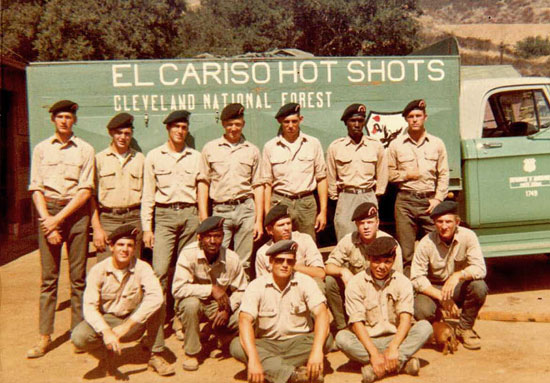
Rich Leak, in front with sunglasses, in the year of the Loop Fire. Five fellow "Hotshots" in this picture died.
Last week, a memorial was relocated in the San Fernando Valley, a bit of granite that was moved for improvements at El Cariso Community Regional Park. The marker is modest, standing in sharp contrast to the tragedy it commemorates: Forty-six years ago this month, 31 young men were dispatched to a wildfire near Sylmar, and only 19 of them survived.
Rich Leak was 19 that summer, the gung-ho son of a Camp Pendleton fire captain. “All my life,” he recalls “I had wanted to be a fireman.” After attending a summer firefighting program at the U.S. Marine base, he had joined an elite ground crew of “hotshots” based near Lake Elsinore, so called because they were dispatched to the hottest parts of forest blazes. By 1966, his second year with the El Cariso Hotshots, he was a crew foreman, traveling the West to cut fire lines and clear brush around raging wildfires and “loving the excitement and the adrenalin rush.”
The Nov. 1, 1966, call came on a hot day at the end of a long fire season: A faulty power line had sparked a brushfire near Pacoima Dam. Whipped by Santa Ana winds, the blaze had charred some 2,000 acres around Loop Canyon. But it appeared to be dying by the time Leak and his fellow hotshots got what they regarded as an easy assignment—to scrape a fire line along a ravine near the smoldering fire.
“There wasn’t a lot of brush, and the fire was starting to lay down, so the line we were cutting didn’t have to be that big,” Leak remembers. The young men worked without gloves, their hands thick and calloused, their shirtsleeves rolled up. Their orange fire shirts had been washed so many times that they had long since lost their fire retardant coating. No one carried a radio or stood lookout. No one bothered to haul in a portable fire shelter.
And no one understood the dangers of the terrain, Leak says. Now firefighters know that a steep crease in a slope can act as a draft for combustible gasses. But on that day, no one knew that the 31 guys in orange hardhats were entering a death trap. They were nearly done with their work when, at 3:35 p.m., the wind abruptly shifted. A spot fire ignited on the hillside below them. As Leak looked up, the air around him suddenly went wavy.
Down the line an order came: Get out—now! But within seconds, a mighty rush of super-hot gas swept up the 2,200-foot ravine and exploded.
“It was like when you pour lighter fluid on a charcoal barbeque and put a match to it,” Leak remembers. “There was this big wooooof! And then all I could see was just a wall of orange flame. I had to look straight up to see blue sky.”
Leak held his breath so his lungs wouldn’t sear in the 2,500-degree heat, falling to his knees as the shock wave hit him. “Guys were yelling and screaming and praying and calling for their mothers,” he remembers. “I was talking to my Savior, that’s for sure.”
The Loop Fire would change safety protocols for fighting fires in narrow canyons, encouraging lookouts and radios and the development of much-improved fire gear, but not before it claimed the lives of 12 hotshots, most in their late teens and early 20s. Ten more were critically burned and scarred for life by the disaster. The fireball lasted no longer than 60 seconds, but in that time Leak suffered full-circumference burns from his elbows to his wrists, and lost four of his fingers.
After the smoke cleared, he recalls, “I was in shock, running around from one guy to the next, trying to put out the fire with my bare hands. At one point, I looked down at my arms and saw skin hanging down. All I thought was, ‘Wow, I guess I got burned pretty good.’”
It took three years and more than 30 surgeries for doctors to repair Leak’s wounds, using skin grafts from his stomach to repair his damaged hands. He has had to relearn how to type and eat with utensils. He struggles to pick up coins and he has to use both hands to screw a hose onto a faucet. He has no fingerprints.
“For a long time, I was very self-conscious,” he remembers. He went back to school at Palomar College near his hometown of Vista, earning an associate degree in business, thinking he might become a CPA. Then he heard the Vista Fire Department was hiring dispatchers. “It’s hard to describe unless you’re a firefighter,” he says. “It never goes away for me.”
He spent 30 years with the Vista Fire Department, working his way up to fire investigator before retiring to Hesperia 12 years ago. He married a friend’s neighbor and helped raise her two children. “To her, it was what was in my heart that mattered,” he says. “She told me she didn’t even notice I was burned at first.”
Then in 1996, the U.S. Forest Service sent him a notification: A memorial commemorating the 30th anniversary of the Loop Fire was going to be installed in El Cariso Park. Not all the survivors could make it, but some did. Sadly, they recalled the fallen.
“I still remember ‘em,” Leak says. “Raymond Chee, my crew boss, a Navajo I think from New Mexico—very quiet guy, used a brush hook. He was the best hook I’ve ever seen. The White brothers, Michael and Stephen, 22 and 18. They were from San Diego. Their dad was a captain in the Navy. It was devastating for their family.
“John Figlo, he was 18, kind of a quiet guy. Strong. James Moreland. He was in his twenties. Frederick Danner, a tall guy and a really good worker. He died in the hospital. Kenneth Barnhill, nice guy. I knew his brother. Carl Shilcutt, he was 26, one of the older guys on the crew.” He continues down the list: Daniel Moore, Joel Hill, William Waller. John Verdugo, a 19-year-old kid whose body was the first one he saw when he opened his eyes.
Leak kept in touch with the other survivors. He and another ex-hotshot, Ed Cosgrove, began giving talks together to fire academy classes. There were reunions—that’s how he found out that the 1996 marker was in serious need of repair. A drunk driver had hit it and cracked the granite. Skateboarders had worn down the lettering; taggers had marred it with graffiti.
So Leak spearheaded a move for a new one, only to learn that it was going to be moved anyway to make way for park improvements. Last week, a new marker was re-dedicated near a park office building. “It’s near a walkway,” he says. “Granite, just like the original.”
“There are times when I think, ‘What if I’d perished?’” says Leak, now 65. “But you can’t let things haunt you. You have to get over your injuries and go for it. I’m thankful to be here, living my life.”
Posted 11/7/12
Helping kids be a force “4GOOD”
November 20, 2012
Maybe, as the ‘80s bestseller says, everything we need to know we learned in kindergarten—but for the Athanas and Goldman families, it turned out that wasn’t nearly early enough.
The San Fernando Valley couples, close friends since their children were in preschool together, wanted to find a way for even the youngest members of their families to taste the joy of generosity.
“We’re both civic-minded families, and we wanted to involve our kids in giving back,” says Erika Athanas. But there was a problem: most of the volunteer opportunities they encountered were geared to high school students and adults. Even the best-intentioned little kids weren’t a good fit for dishing out dinner at a homeless shelter, for instance.
So an idea was born and, this being 2009, that idea came with a Facebook page. The goal, initially, was just to reach out and see if there were other people searching for child-friendly volunteering events and causes that make it possible for families to unplug and spend time together while making the world—or at least a small corner of it—a better place.
The answer was a resounding yes. And today, the nonprofit organization the families created, 4GOOD, has grown into a social networking success story and home-crafted online resource center. Athanas, who co-founded the group with her husband, Peter, and their friends Katie and Jeff Goldman, estimates there are now 2,500 “4Gooders” involved with the organization.
“I cannot tell you how many people have reached out to us to say, ‘Why don’t organizations include children? Why is it so hard to find them?’ ” Athanas says.
Responding to the demand, 4GOOD’s first annual “Family Day” earlier this year attracted hundreds of participants (look for the next one on April 7, 2013.) Kids got a hands-on taste of volunteering by making placemats and flower pots for seniors who receive Meals on Wheels and by crafting cards for military service members as part of Operation Gratitude.
The calendar on the 4GOOD website links to dozens of activities, ranging from helping out at the Baby2Baby Warehouse distributing “gently used” gear to needy families to cleaning cages and handing out hay to rescued bunnies at a shelter. This month, 4GOOD is asking its members to take part in a pre-Thanksgiving food drive sponsored by Jewish Family Service’s SOVA program. And on December 2, they’re joining forces with the group Friends & Helpers on an Adopt-a-Family/gift wrapping event in Tarzana.
Last year, Scholastic’s Parent & Child magazine recognized the group’s work by selecting the Athanases as its Family of the Year.
That brought a cover photo shoot, an appearance with Hollywood stars William H. Macy and Felicity Huffman, and even an online storybook populated with illustrated versions of Erika, who works part-time in product development, Peter, a business consultant, and their sons: Izak, now 12, and Eli, who’s about to turn 8.
Along the way, 4GOOD hasn’t just made a difference in the lives of others. It’s also been a transformative force for the founders’ own families.
“I really feel my kids will be better human beings and better adults because I’m showing them the way,” says Athanas, who “never volunteered in my life until I was in my 30s” but wanted things to be different for her children.
“A lot of these things that we suggest to do are fun. We want them to have fun and to enjoy it,” she says. “My own kids drag their feet sometimes, of course. That’s the nature of being a kid. But at the end of every single thing, they end up saying ‘You were right, Mom. That was really incredible.’ ”
Posted 11/20/12
Playing through the pain
November 20, 2012
Rival gang members stand face-to-face, struggling to transcend their natural hostility towards one another. But it’s not a real-life showdown. They’re portraying lovers, lead actors in a play they helped write. In fact, it’s just another day in the life for The Unusual Suspects, a nonprofit group that teaches at Camp David Gonzales, a Los Angeles County juvenile detention center.
Sally Fairman, the group’s executive director, says theater arts are an ideal form of expression for the boys, who are incarcerated at the camps for serious crimes. In preparing to confront an audience, students are compelled to confront their own demons.
“Because they are going to be in front of people with their story, they have a big investment,” Fairman says. “They really have to come together if they want to succeed. Every player is important to the show and each of them feels that sense of importance to themselves and to their fellows.”
The educational program consists of two 10-week sessions, each culminating in a live performance. The first session focuses on playwriting. When it’s over, professional actors perform the play under the direction of the young writers, who offer advice on how to portray their characters. The second session centers on performance, using games and improv to teach acting skills. At the end of that session, the students themselves perform the play. The staff and teaching artists are theater pros, and they teach in a hands-on style, about one teacher to every 3 kids.
It’s not always smooth sailing. Many of the kids carry the baggage of physical and sexual abuse, drug and alcohol issues and abandonment problems from absentee parents. A good number of them have gang affiliations, like the two rivals who were playing opposite each other as lovers in true Shakespearean tradition, with one taking the role of a woman. These obstacles must be overcome for a successful play.
Getting beyond such issues is the underlying goal of the program, according to Michal Sela-Amit, a board member of the group who chairs the Families and Children Concentration at USC’s School of Social Work. The camp workshops are intended to function like group therapy sessions, although that’s not how it feels to participants. They’re too busy acting and writing.
“They’re not going to come to therapy that quickly and they’re not going to talk about those things so willingly,” Sela-Amit says of the workshops. “Drama works on so many levels—with the individual, the group, the audience—you’re having fun with a group of people.”
Sela-Amit says the program is intended to maximize a person’s full brain power. She says that traumatic experiences, such as those experienced by the young adults in the camps, settle into the brain’s more creative right side, where they inhibit learning and growth and create worries and anxieties. The exercises of writing and acting, she says, essentially push these traumas to the brain’s more logical left side, where they can be processed. Once that happens, new neural connections can form, enhancing an individual’s ability to interact with society in a more positive way.
Mike Varela, director of Camp Gonzales for the county’s Probation Department, says he can see the results as tough guys at his camp break out of the hard shells they’ve built up over the years.
“You have these hard guys with these façades, and suddenly they are laughing and having the time of their life,” he says.
This Saturday, November 10 at 1 p.m., professional actors will perform the students’ latest composition—Money, Power, & Regret—for a public audience at Camp Gonzales. (For security reasons, advance reservations are required for those who want to attend. While the official deadline for reservations has just passed, staff from the Unusual Suspects said they will try to accommodate late requests. For more information, email [email protected].)
The Unusual Suspects was founded in 1993 by actress Laura Leigh Hughes in response to the Los Angeles riots of the previous year. The group first came to Camp Gonzales in 2004. Over the years, the group has taught thousands of youths, now averaging about 300 per year across the region.
The organization reaches beyond detention facilities, too, to kids ages 9 to 21, who live in high-crime, impoverished and underserved areas. Fairman says the program is always evolving, and they’ve recently started engaging multi-generational groups in south L.A. and Pacoima, with positive results. Older members of the communities are getting involved after seeing their own lives reflected in the performances, she says.
Fairman wants to keep adding The Unusual Suspects’ brand of therapeutic theater to the existing mix of tools and organizations in local communities. So far, she says, communities have embraced the program and offered their own suggestions, such as incorporating visual arts, dance and cultural traditions.
“I would like to see us be a model, expand nationally,” says Executive Director Fairman, “and help more communities place arts at the center of their strategies for transformation.”

Actors Marcus Woodswelch and Hilary Ward portray characters in "The Lost Son," a play written by Camp Gonzales students in 2011.
Posted 11/8/12
After turkey, taste L.A.’s latest
November 19, 2012
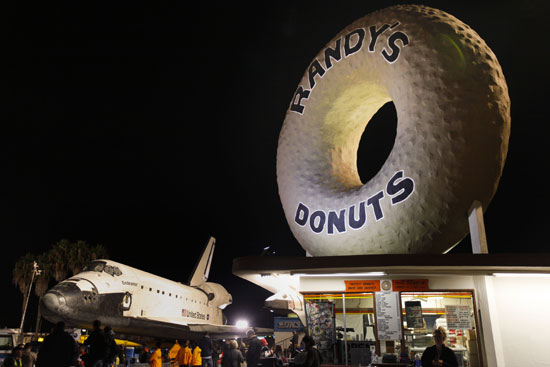
Two L.A. icons passed in the night, as the space shuttle Endeavor made its way to the California Science Center.
Once Thanksgiving dinner has been eaten, the leftovers packaged and all the tryptophan-induced post-dinner naps taken, you’ll realize there are still three days of holiday weekend left on your plate. Whether you’re hosting out-of-towners or just looking to explore, it’s the perfect time to see what’s new around town. Some pretty big things have been happening in Los Angeles County this year. Let’s start with a space shuttle:
Endeavour to the California Science Center
This one’s so huge it had to be flown in piggyback-style on a specially designed NASA aircraft. The decommissioned space shuttle Endeavour reached to its final resting place at California Science Center on October 14, where it is now on display. If you go to see it, you should also catch Cleopatra: The Exhibit, which features the largest collection of Cleopatra-era Egyptian artifacts ever displayed in the United States. It wraps up its 7-month stint at the center on December 31.
All aboard Expo
You can get to the Science Center by taking advantage of another L.A. newcomer—Metro’s Expo Line, the first modern passenger rail line to connect downtown and the Westside. (The line currently extends to Culver City. Phase 2 of the line, slated for completion in 2016, will extend all the way to Santa Monica.)
In addition to the Science Center, the line serves major landmarks like the Staples Center, the L.A. Coliseum, ExpositionPark and Natural History Museum. There are plenty of homegrown culinary destinations, too, if you want to add some variety to the regimen of Thanksgiving leftovers. See Metro’s handy list for other destinations and attractions.
“The Rock” and more at LACMA
Michael Heizer’s “Levitated Mass” art installation was the talk of the town this past summer before it was even installed. Its centerpiece 340-ton boulder drew crowds of onlookers as it inched its way through the streets towards the Los Angeles County Museum of Art. It took a herculean effort to get it there—it’s not going anywhere fast. While you’re there, you can check out two exhibits that won’t be around forever—one on Robert Mapplethorpe’s photography and another featuring the art of director Stanley Kubrick.
A day in the park
It’s been a good year for parks, so there’s more reason than ever this year to get out and exercise the gravy out of your system. Grand Park made its debut in October, giving Angelenos a new place to relax and play outside. Go for a stroll, experience the diverse programing presented there or kick back and watch the remodeled fountain from one of the park’s striking, movable hot pink seats.
Elsewhere, the Santa Monica Mountains wilderness area got a new visitors center at King Gillette Ranch, while El Cariso Park in Sylmar just opened a community center and gymnasium.
Blazing new paths
Parks aren’t the only places to burn calories. When Metro’s Orange Line Extension to Chatsworth opened in June, four miles of bike path opened with it, giving a big boost to local bike infrastructure and drawing cheers from L.A.’s fast-growing cycle culture. More bikeway was added along the L.A. River this year, too, and passage of the county Bicycle Master Plan means the region will be getting more bike-friendly in the future. For walkers, there’s a new section of greenway to explore in the San Fernando Valley.
The Science Center, LACMA and the Natural History Museum are all closed on Thanksgiving Day, November 22, but will be open during normal hours for the rest of the weekend.
By getting out and staying active this Thanksgiving weekend, you can help make sure the next “big thing” in L.A. isn’t you.
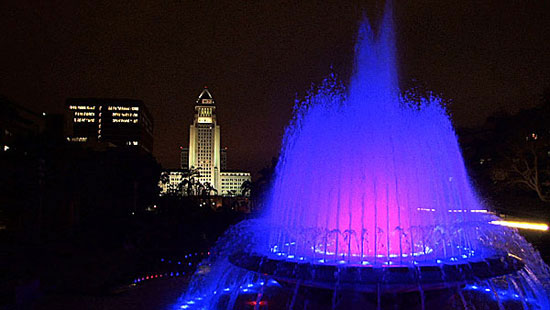
The Arthur J. Will Memorial Fountain was restored, lit and enhanced as part of downtown's new Grand Park.
Posted 11/19/12
A giant step for L.A.
November 18, 2012
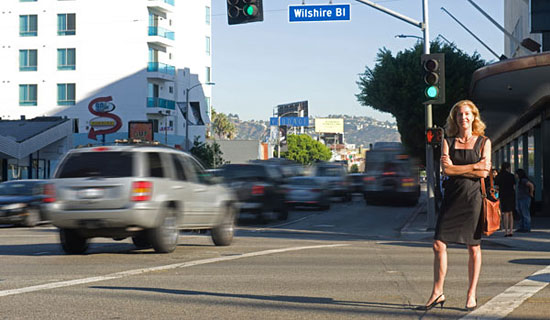
Margot Ocañas, the city’s new pedestrian coordinator, at the intersection of Wilshire and Fairfax this week.
In some ways, Margot Ocañas has been walking the walk ever since she was a kid growing up in Lancaster, Pennsylvania, and her mom sent her off to modern dance lessons with the words:
“You’ve got two feet and a bicycle. Get going.”
Talk about prophetic. Today, Ocañas—a Mandarin-speaking Fulbright scholar and one-time Wall Street analyst whose resume also includes running an independent film company with her husband and developing “streets for people” projects at the county Department of Public Health—is jumping feet first into a brand new role with major ramifications for how L.A. moves into the future.
As Los Angeles’ first pedestrian coordinator, Ocañas, 48, is front-and-center of a growing movement that aims to rethink streets as we know them.
Her appointment is just the latest sign—along with car-free CicLAvia events, a new pedestrian plaza in Silver Lake and a burgeoning public transit system—of how Los Angeles is throwing off its car-centric reputation in sometimes unexpected ways.
“The national momentum is very much our friend right now,” Ocañas said. Pedestrian awareness is “part of a larger national conversation. People are in tune with that.”
Ocañas and assistant pedestrian coordinator Valerie Watson, an urban and regional planner by training, have recently joined the city Department of Transportation. Their mission: making life better for walkers on streets that often were built mostly to enable automobiles to get from Point A to Point B as efficiently as possible. The tools of transformation include reshaping lanes and crosswalks, changing signs and signals—anything to foster calmer corridors and reduce the “raceway mentality” that’s rampant on many streets.
And then there are those things that are beyond the DOT’s purview—such as “street furniture” like benches and light fixtures. “To enhance the safety and the warmness of a corridor, you might want to start installing more of what I call human scale lighting. You may have flower baskets, or trash cans,” she said. “I think it’s those types of amenities that just make it feel more like an outdoor living room.”
Since sidewalks and street furniture fall under the Bureau of Street Services, not the DOT, part of her job involves reaching across departmental lines. “There are just increasingly strong strategic working relationships and partnering that’s happening with Street Services and Street Lighting,” she said.
Deborah Murphy, founder of the pedestrian advocacy group Los Angeles Walks and chair of the city’s Pedestrian Advisory Committee, said she’s been urging the appointment of an L.A. pedestrian coordinator for more than 15 years. While Los Angeles still has a long way to go to before it catches up with other cities including, locally, Santa Monica, she senses a permanent transformation is underway.
“I have really seen a huge change in the last year,” she said. “I’m thrilled. I think Margot and Valerie bring lots of great energy to pedestrian safety, and to encouraging people to walk.”
The well-traveled Ocañas, who moved to Los Angeles in 2003 from New York by way of Austin, also thinks the moment is right for the city to get in touch with its pedestrian side. She’s reached out to counterparts who are on the same journey in New York, which is regarded as a national leader in reconfiguring streets, notably in Times Square, as well as in San Francisco and Chicago. She thinks it can’t hurt that stratospheric gas prices are making alternative modes of getting around look better and better these days.
“Selfishly, I’d love to see gas prices not go down,” said Ocañas, who gets to work by bike, bus and foot three days a week and has organized a “bike train” caravan to get her two children to school each morning. “I could be talking till I’m blue in the face but there are certain triggers that just force behavioral change.”
Walk a mile in her slingbacks, and you’ll quickly get a sidewalk-level view of what’s good, bad and ugly out there on the L.A. pavement.
At the busy triangular intersection where Fairfax, Olympic and San Vicente come together, Ocañas watched one morning this week as pedestrians scrambled to cross. She reflected on how broad streets with short signal times can pose difficulties, especially for the elderly.
“I have seen situations where seniors are caught three-quarters of the way across the street and the light has turned,” said Ocañas, who lives in the neighborhood with her family. “We do have a population that’s getting older. We need to adjust signaling to ensure their ability to cross more effectively.”
Beyond that, “unwelcoming” streetscapes can send a forbidding signal to just about anyone who’s not in a car.
“People are not incented, or motivated, or enthused at times to get out and walk,” she said. “But those times are changing.”
Her proposed solution: “Re-engineer the environment.”
Ocañas’ previous position as a policy analyst at the county Public Health department’s Project RENEW, funded with federal stimulus dollars, involved working on grant proposals intended to combat obesity by confronting challenges in L.A.’s “built environment”—such as those long, unshaded stretches of roadway where fast car traffic and widely separated crosswalks make it uninviting or impossible for pedestrians to stroll and interact.
“When I was on the health side, we always talked about, ‘We’ve built ourselves into sickness so we need to build ourselves out of sickness,’ ” Ocañas said. One of the projects she worked on turned into the green polka-dotted Sunset Plaza Triangle pedestrian zone in Silver Lake, which opened in May.
Her own transformation, from a career in the private sector that included working at Dell Computers, started modestly enough, with a block party closure she organized to give neighborhood kids a chance to wheel around freely on their bikes and scooters. Ryan Snyder of the urbanist transportation planning firm Ryan Snyder Associates was there as the guest of a neighbor. When he met Ocañas, he mentioned the upcoming policy analyst positions in Public Health.
A light bulb went on. “It never occurred to me to consider taking a recreational passion and translate it into a paying job,” she said.
At the city Department of Transportation, Ocanas’ and Watson’s first priority is developing a Safe Routes to School Strategic Plan for the city. The “data-driven” plan will help the department prioritize spending on student safety projects and will introduce “new types of pedestrian-centered amenities” into the mix. It also will serve as a building block for the eventual creation of a “Pedestrian Safety Action Plan” for Los Angeles—something that’s probably three to five years down the road.
At the same time, they’re working to foster innovative “place making,” including “parklets” (tiny curbside areas the size of parking space, often in front of businesses and furnished with seating areas and plants) as well as bike corrals and pedestrian plazas like the one in Silver Lake.
“You do these things that you can quickly implement with low-cost materials…to help demonstrate the benefits of ‘people-space,’ ” Watson said.
Ocañas, who like Watson is being paid by DOT Measure R funds that have been targeted for pedestrian initiatives, said she’s finding the department a “very supportive environment.”
“I actually find them very open,” she said. “We will debate. I will learn from them: ‘OK, you just can’t do that, and for these reasons.’ But similarly, they are very open to ‘Why not?’ ”
Posted 10/18/12




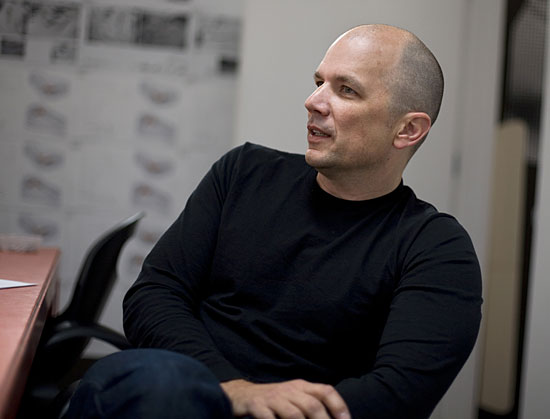
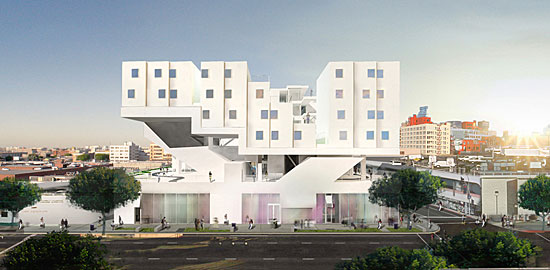
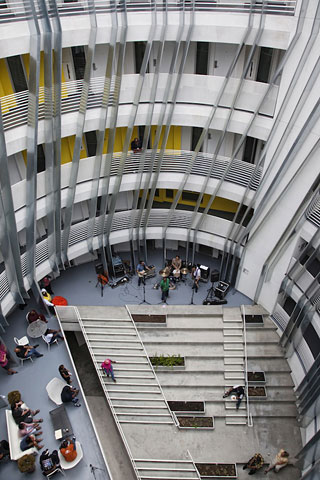
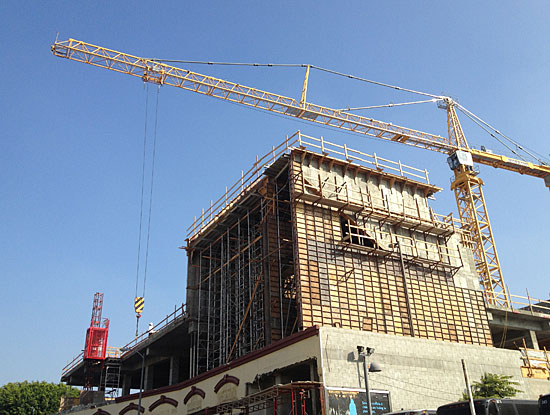
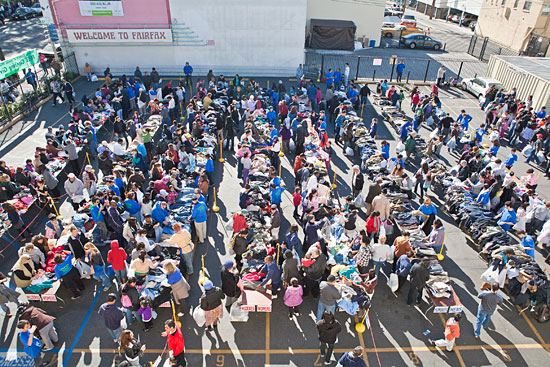
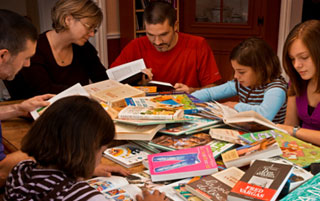
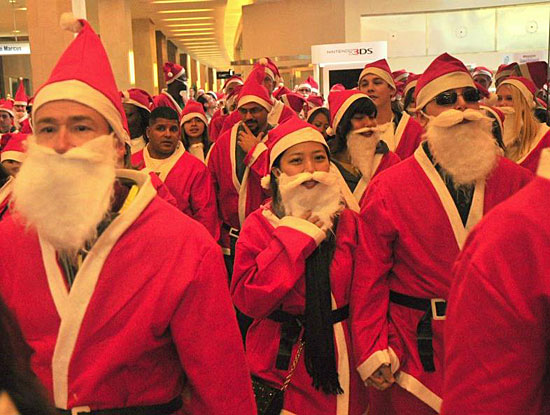
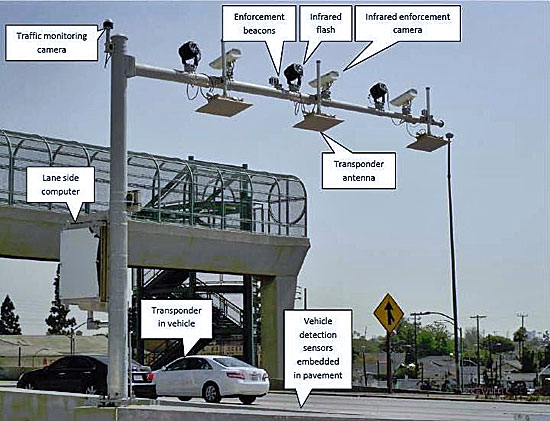
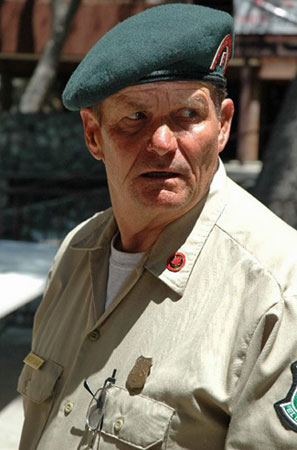
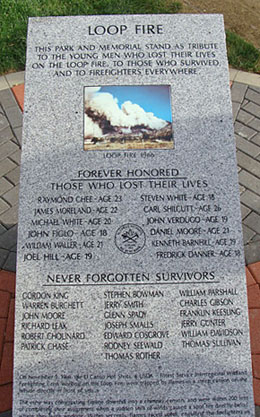
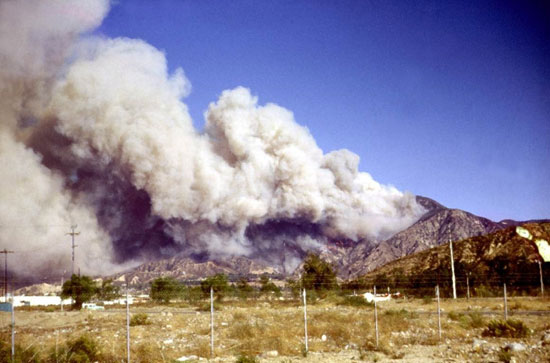
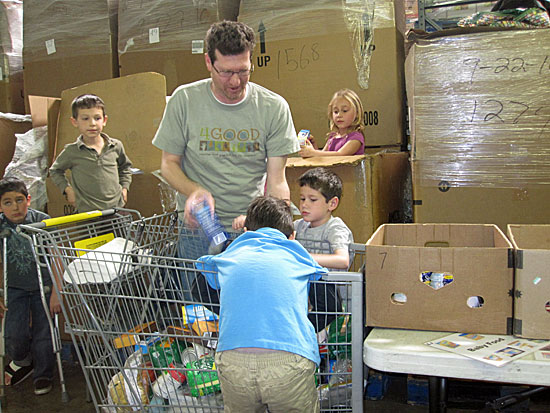
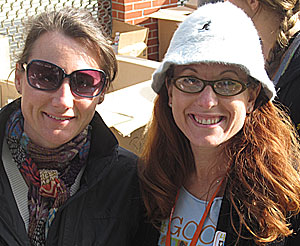

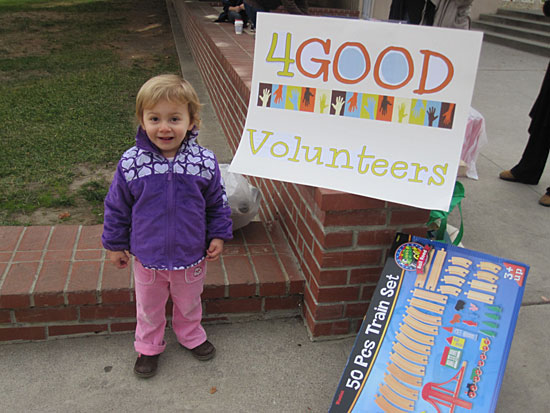
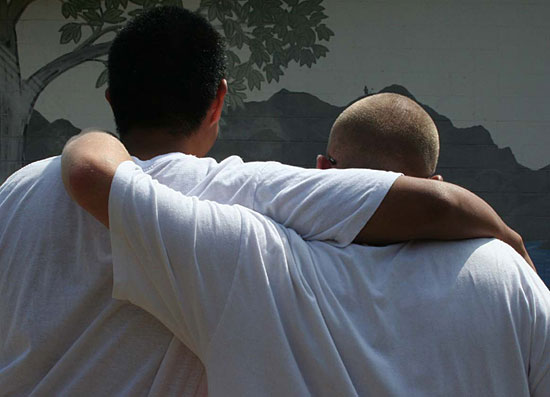
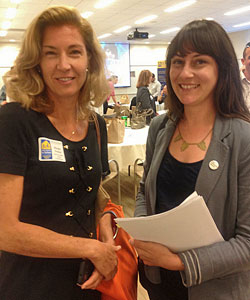
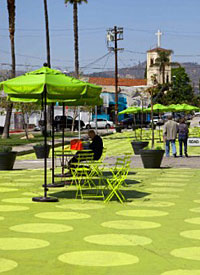
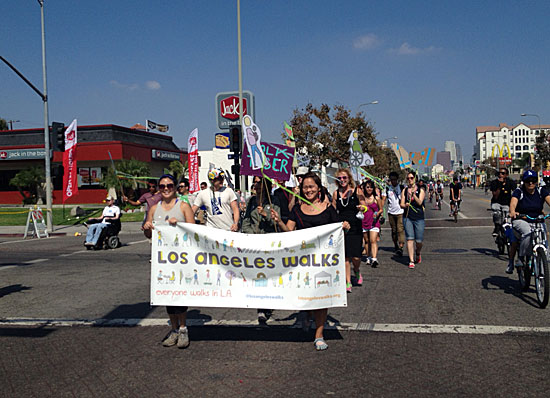





 Check for the latest closure information
Check for the latest closure information








